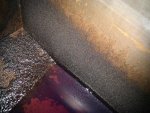Cobra
Well-known member
Looking for some opinions here (dangerous I know!) on fuel tanks.
For the past two seasons we have been having serious issues with diesel bug in our 50 ltr stainless steel tank. Tried all types of preventative treatments but to no avail...usually 30 minutes motoring and power begins to drop off as the filters get clogged.
So, it is time to address the problem properly!
So, do I :-
a) remove the current tank and have it professionally cleaned
b) scrap the current tank and replace with the smallest available plastic tank
c) scrap the current tank and replace with a new smaller stainless tank
The tank is fitted to a Colvic 26 Sailer and in all honesty we only tend to use the engine getting on and off the mooring or going into marina's, so a 50 ltr tank is I think somewhat overkill.
Thoughts?
For the past two seasons we have been having serious issues with diesel bug in our 50 ltr stainless steel tank. Tried all types of preventative treatments but to no avail...usually 30 minutes motoring and power begins to drop off as the filters get clogged.
So, it is time to address the problem properly!
So, do I :-
a) remove the current tank and have it professionally cleaned
b) scrap the current tank and replace with the smallest available plastic tank
c) scrap the current tank and replace with a new smaller stainless tank
The tank is fitted to a Colvic 26 Sailer and in all honesty we only tend to use the engine getting on and off the mooring or going into marina's, so a 50 ltr tank is I think somewhat overkill.
Thoughts?


